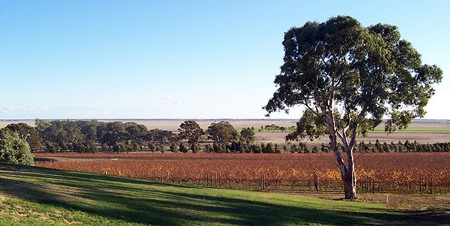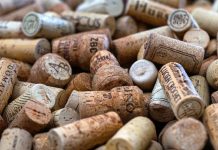Recently I went to a wine tasting at one of the local haunts and although there were some exceptional wines on offer, I couldn’t help being disappointed with the attitude of the guests. It was obvious that most people had gone there not so much to taste the wine, but simply for a chat and a good booze-up. Now I am not suggesting that a wine-tasting should be held in an atmosphere of cloistered solemnity, though this would be my personal preference, but it would have been pleasing if people had showed a bit more interest in what they were supposed to be tasting.
If, like me and the dogs, you read this column regularly, you’ll know that I tend to harp on about aroma, which I think is just as important as taste. In a few cases, it’s more important because strange as it may seem, I have come across some wines that smell better than they actually taste. Few people at the tasting were even bothering to look at the wines, let alone explore the aromas and give them some thought. Some people were giving their glass a cursory sniff, such as you might do to check whether the milk has gone off. Others were knocking the stuff back as though they were drinking lager. This was a shame, because several of the wines deserved better attention. Yes, of course, wine is basically for enjoyment and I’ll be the first to agree. But if you don’t bother to appreciate the appearance, the aromas and the tastes then really what’s the point? I should have got used to this kind of behaviour by now but it still gets me cross. It just seems a terrible waste.
 Australian vineyards (Photo: Scott Davis)
Australian vineyards (Photo: Scott Davis)
Oh dear, I think I’m really beginning to sound like a grumpy old fart. (Funny you should mention that – Ed.) Right. No more complaints. Let’s start thinking positively. These two wines come from the Reynella Winery which is in the southern suburbs of Adelaide. It’s on the site of the oldest wine business in South Australia, established by John Reynell in 1838. The Hardy wine family eventually bought the business in 1982 in an ironic reversal of roles, because in the 1850s Thomas Hardy worked for John Reynell during his first six months in Australia.
Taras Bin 383 Cabernet Sauvignon 2012 (red), Australia. (Bt. 525 @ Various Outlets)
In some ways, this wine is a fairly typical Australian Cabernet. It’s a very dark, intense red colour with a hint of purple. There’s a distinctive aroma of black fruit, blackberry, ripe cherry and plum. There’s a touch of oaky spiciness on the smell too. The taste comes as a surprise, because it’s more assertive than I expected. Even though it’s a dry wine there’s plenty of fruit on the palate which gives the impression of sweetness. There’s a good framework of firm tannins too, which come through especially on the finish.
In contrast to many of today’s Australian easy-drinking crowd pleasers, this one is made of stronger stuff. It’s quite a macho little number really and very much a “take me as you find me type”. It cries out for food and at 13.5% alcohol content that’s not a bad idea. You could try it with roasts, barbeques, rich red meat dishes or pasta. It would probably work with cheese. I say “probably” because red wine and cheese, contrary to popular belief are not automatic partners.
I have found that cheeses like Camembert and Brie work better with a white wine especially if it has a dash of acidity, such as an Italian Pinot Grigio or a Grüner Veltliner from Austria. Mozzarella works well with light and zesty Italian whites and Gruyère goes a treat with Chardonnay, Pinot Grigio or even dry Sherry. The tricky one is Cheddar. Some wine writers suggest Shiraz or Cabernet Sauvignon but I always feel that the tannins in the wine seem to clash with the texture of the cheese. I find that a rich Chardonnay works fine with Cheddar, or even a sweetish Sherry. On a hot summer’s day, many British Cheddar-type cheeses taste their best with a glass of cold beer.
Taras Bin 681 Chardonnay 2012 (white), Australia. (Bt. 525 @ Various Outlets)
This is a decent, basic Chardonnay with a typical lemony-gold colour and hints of green. There’s a pleasant and quite sophisticated whiff of peppery pineapple, if you can imagine such an odd combination. The aroma also brings melon and peach, a dash of citrus and in the background, hints of oaky dry herbs. There’s plenty of lemony fruitiness on the palate and a lively cut of acidity, which makes this medium-bodied wine taste crisp and refreshing. It’s really dry but quite an easy-drinker, with the slightest suggestion of sweet fruitiness. There’s a longish and attractive dry finish too. With its bright oaky freshness and 13% alcohol content, this wine would work well with fish dishes or lightly cooked chicken. White meat served with a light creamy sauce would work well too, because the sharp and zesty taste of the wine would make a pleasing contrast to the texture of the sauce. For the same reason, it would make a good partner for soft and creamy French cheeses like Brie, Camembert or St. Paulin. I think it would work well with a cheese quiche too but to be honest, I can’t be bothered making one to find out. You’ll just have to take my word for it.
There was a time was when both these wines cost a mere Bt. 449 a bottle. But those days have gone it seems, at least for the foreseeable future and the new taxes have made this wine a little bit expensive for what you actually get. But they’re available at many outlets and I have even seen them at Family Mart, which might be reassuring to know if you run out of vino half way through your chicken nuggets.




